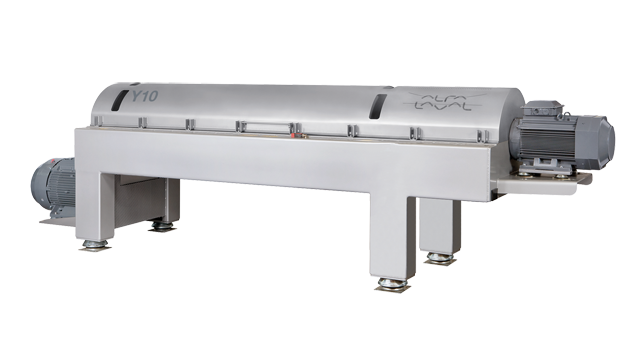橄榄油(Y)
专门用于两相操作,阿法拉伐橄榄油Y系列卧螺离心机的设计是为了在橄榄油生产链中提供经济有效的操作。在第一次和第二次提取时进行澄清、提取、脱水和分级。
Design features and benefits
The decanters feature a special design for two phase operation. The geometry of the conveyor allows a good performance through:
-
Open and gentle feed zone design “Esbjerg” able to give maximum performance and wear resistance
-
Special flight for oil migration to the liquid outlet able to optimize yield and oil clarification avoiding turbulence
-
Special conveyor design to improve solids transportation and liquid separation
-
Tungsten carbide tiles on conveyor forAlfa Laval Y9 and Alfa Laval Y10. Optional for Alfa Laval Y8. Special and exclusive wear protection able to significantly reduce maintenance cost of conveyor.
Through the electronic control of the conveyor speed (differential speed) the retention time can be adjusted and set to obtain the required degree of oil clarification. Electronic control of differential speed is done trough a variable frequency drive (VFD) directly connected to Alfa Laval's exclusive direct drive gearbox. This new setup makes it possible to reduce power consumption and wear due to transmission.
High quality stainless steel is used throughout, including hinged casings for easy opening, maintenance and cleaning.
The decanters also have an electronic overload protection system.
运行原理
The decanter centrifuge design ensures separation of the incoming olive paste into two phases – oil and wet solids.
The olive paste is fed into the bowl through a stationary inlet tube and is then smoothly accelerated by an inlet rotor. Separation takes place in a horizontal cylindrical bowl equipped with a screw conveyor. Centrifugal force causes instant sedimentation of the wet solids on the wall of the bowl.
The conveyor rotates in the same direction as the bowl, but at a different speed, and conveys the wet solids to the conical end. Because it is lighter, the oil flows on the inside, and the wet solids move towards the outer perimeter. Separation takes place along the entire length of the cylindrical part of the bowl. The liquid phases pass to their outlet via a vibrating filter and is then discharged into collecting tanks.

